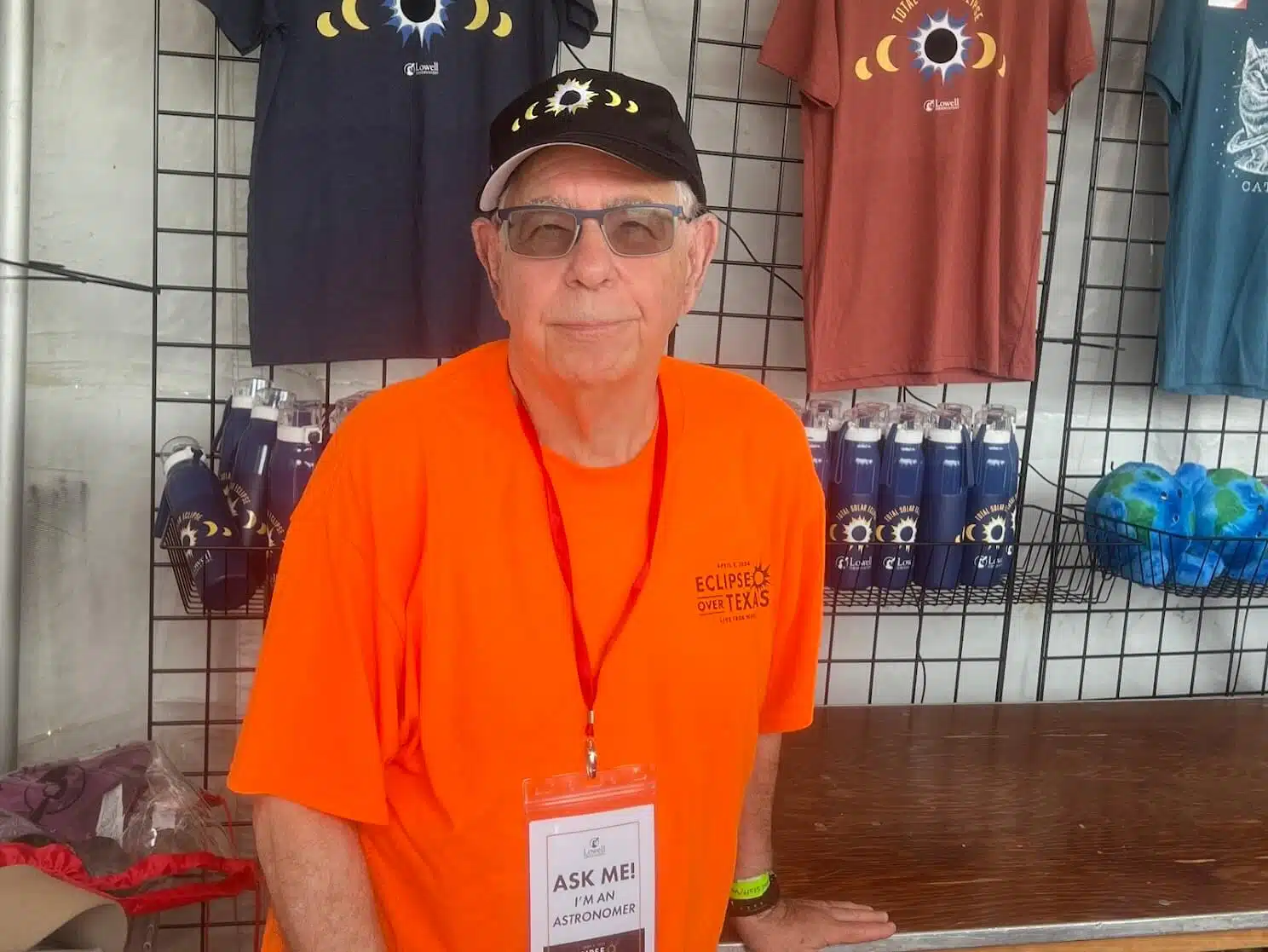The accessibility of science is very important to Prof. Wasserman, following his teacher, and he is happy for the opportunity to bring many young people, including children, to science on this occasion of a heavenly event that receives public interest

About 11 people, men, women and children, participated in the main solar eclipse viewing event held at the Baylor University complex in Waco, Texas.
Many brought with them observation equipment and the organizers also handed out eclipse glasses at the entrance as well as a page with various geometric shapes on it - a triangular and square circle which, when projected during the partial eclipse, shows the shape of the eclipsed sun and not the shapes of the holes.
We met with Prof. Wasserman at the souvenir pavilion that he established at the Lowell Observatory in Flagstaff, Arizona. We met Prof. Larry Wasserman from Mitzpe Lovell Observatory in the observatory's souvenir pavilion. He talks to the Science website about his studies at Lowell since 1974, his extraordinary Ph.D. supervisor at Cornell University.
"I am currently engaged in the study of small bodies in the solar system, and especially in the objects in the Kuiper Belt. I measure the position and orbit of these objects in order to refine our understanding of the outer solar system."
According to him, scientific interest in the Kuiper belt began to receive serious attention in the early 90s. However, the idea of the existence of a belt of trans-Neptunian objects was proposed much earlier. The Dutch astronomer Gerard Kuiper, after whom the belt is named, published an article in 20 in which he argued that icy objects left over from the formation of the solar system should exist beyond Neptune. The only object in the Kuiper Belt that had been discovered so far was Pluto.
The first discovery of a non-Pluto Kuiper Belt object was made only in 1992 by David Jualuch and Jane Lu. This object, called “(15760) 1992 QB1”, opened the door to a series of other discoveries that proved that the Kuiper belt is a rich region full of trans-Neptunian objects. Since then, thousands of other objects have been discovered in this area, and research on the subject continues to develop and deepen our understanding of the outer solar system and the processes of creating planets and comets.
"I conduct follow-up observations of objects in the Kuiper Belt. We only see a very small part of their orbit, due to their great distance from the moon. To better predict their location we need to follow them to improve the forecast of their location in the future. There have already been cases where we thought we would find the bone again in a certain place and it turned out that it was not there because of forces inside the belt.
Today Wasserman does not need to go to the observatory. He performs his observations of the Kuiper belt self using his home computer.
Wasserman, who received his degree at Cornell University in 1973 and whose thesis supervisor was Carl Sagan, also worked on binary stars and this research offered a direct way to calculate stellar mass, an important insight for understanding the life course of stars.
The explosion of heavy stars as supernovae and the distribution of their material in space is a central phenomenon in binary stars that Wasserman studied. These materials are eventually incorporated into new stars and planets, a process that is central to life and the development of the solar system. During his career, Wasserman developed new methods for measuring and analyzing the trajectories of celestial bodies, using advanced technologies for viewing and observing from a distance.
In addition to his scientific research, Wasserman described Carl Sagan as an influential and important teacher, but also as one whose approach to making science accessible to the public was not always liked by the university. However, "Sagan knew how to combine his scientific work with the popularization of science, a contribution that left a deep impression on many who learned from him and were influenced by his path."
Even at the observatory, which is a small scientific institute that employs a few dozen researchers, they follow in the footsteps of Lovell, one of whose goals in establishing the observatory was to make science accessible. They recently inaugurated a four-story visitor center with donations they raised.
Wasserman explained that the solar eclipse demonstrates the amazing ability of astronomers to predict celestial phenomena with great precision. These predictions are based on mathematical models and calculations made with the help of computers, while taking into account variables such as the height of the surface in the mountains and craters of the moon that affect the process known as the "diamond ring" and actually make it possible to predict with great precision anywhere along the path of the eclipse how the passage of the moon over the sun will look like .
Referring to the eclipse festival in Waco, Wasserman said that this natural phenomenon attracts many audiences who come to observe, strengthening the public's interest in astronomy and science in general. He was especially happy about the large number of children who came with their parents and absorbed scientific knowledge.
More of the topic in Hayadan:
- At the Pick of the eclipse, we also saw Jupiter
- April 8, 2024 Total Solar Eclipse: Wider Path, Longer Duration, and Increased Solar Activity
- The solar eclipse may confuse the behavior of the birds
- Exclusive: An interview with the Israeli researcher who will send a camera to study the corona to a high altitude during the solar eclipse

One response
"And also a page with different geometric shapes on it - a triangular and a square circle that, when they are projected during the partial eclipse phase, you see the shape of the eclipsed sun and not the shapes of the holes."
This reminds me of an article I wrote once, which explains the phenomenon:
https://docs.google.com/document/d/1P5IVhrMYj7k8vG3NvzZcLcgwD1eqPbytJbz7uUv6MfU/edit?usp=sharing